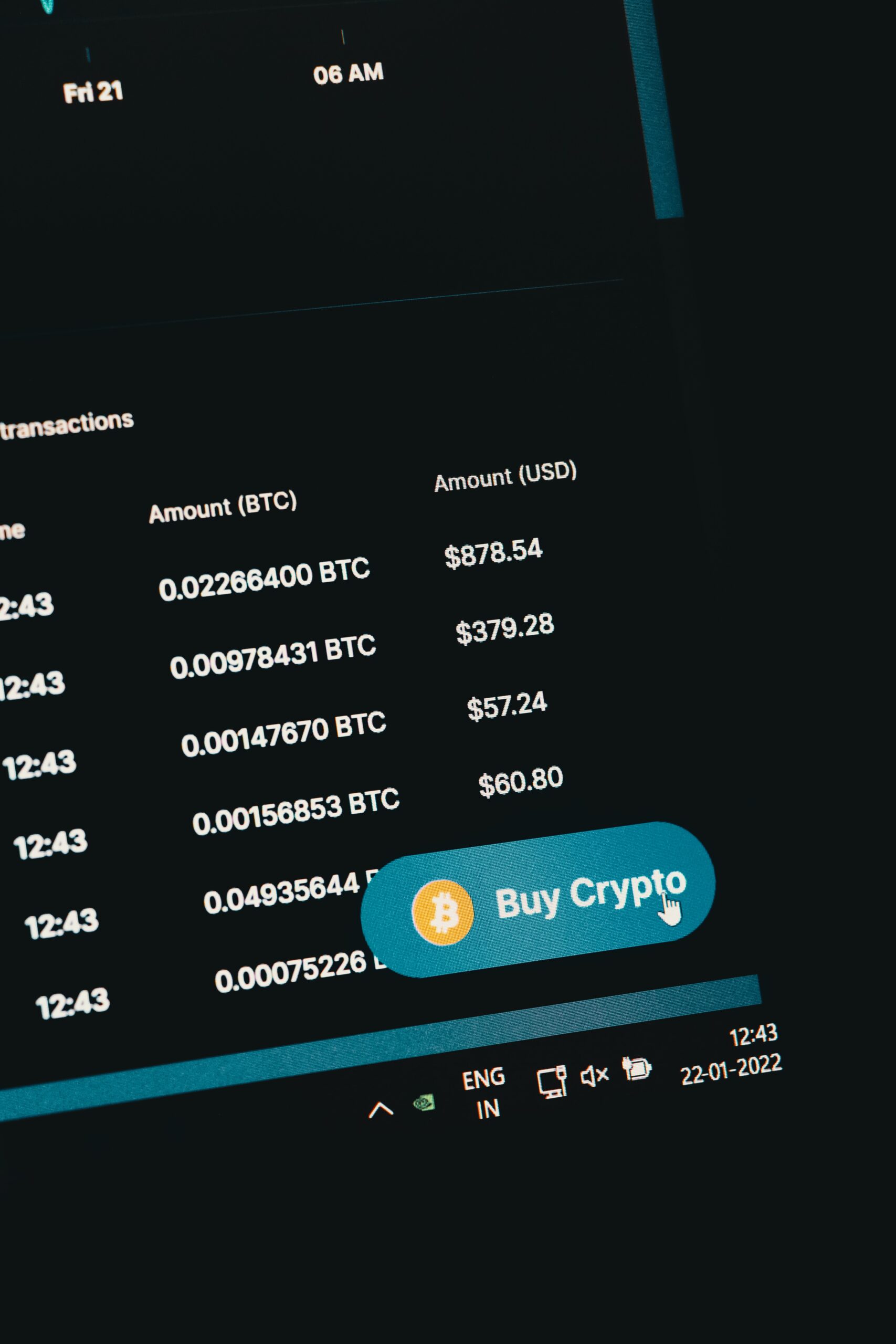If you’re looking for the top cryptocurrency in the world of Web3, your search ends here with “Best Web3 Crypto”. This revolutionary digital asset has been making waves in the crypto community with its cutting-edge technology and unrivaled accessibility. Discover why this cryptocurrency is taking the Web3 ecosystem by storm and why investors are flocking towards it for a piece of the digital revolution.
1. What is Web3 Crypto?
What is Web3?
Web3 refers to the next generation of the internet, which aims to provide a decentralized and user-centric online experience. It focuses on giving individuals more control over their data, privacy, and online interactions. Web3 utilizes blockchain technology to enable peer-to-peer transactions and eliminate the need for intermediaries. This decentralized approach ensures greater transparency, security, and trust in online transactions and interactions.
What is Crypto?
Crypto, short for cryptocurrency, is a digital or virtual form of currency that utilizes cryptography for secure transactions and control of new unit creation. These digital currencies run on blockchain networks, making them decentralized and resistant to unauthorized modifications. Crypto allows individuals to transfer value directly to one another without the need for intermediaries, such as banks or payment processors. It has gained significant popularity due to its potential for financial freedom, privacy, and the creation of innovative decentralized applications (dApps).
2. Top Web3 Cryptocurrencies
Ethereum (ETH)
Ethereum is one of the most prominent cryptocurrencies in the Web3 ecosystem. It was created by Vitalik Buterin in 2015 and has since gained widespread adoption. Ethereum is not just a cryptocurrency but also a platform for developing decentralized applications (dApps) and smart contracts. Its native cryptocurrency, Ether (ETH), is used for running applications, paying for transaction fees, and securing the network through mining or staking.
Polkadot (DOT)
Polkadot is a multi-chain platform that enables different blockchains to interoperate seamlessly. Created by Gavin Wood, one of the co-founders of Ethereum, Polkadot aims to address the scalability and interoperability challenges faced by many blockchain projects. It introduces the concept of parachains, which are independent chains that can connect to and communicate with other chains within the Polkadot network. The native cryptocurrency of Polkadot is DOT, used for governance and bonding.
Cardano (ADA)
Cardano is another prominent Web3 cryptocurrency known for its scientific approach to development. Founded by Charles Hoskinson, one of Ethereum’s early contributors, Cardano is built on a robust proof-of-stake (PoS) consensus algorithm called Ouroboros. It aims to provide a secure and scalable platform for the development of decentralized applications and smart contracts. The native cryptocurrency of Cardano is ADA, used for transactions and participating in the network’s governance.
Solana (SOL)
Solana is a high-performance blockchain platform designed for decentralized applications and crypto-native businesses. It focuses on transaction scalability by utilizing a combination of proof-of-history (PoH) and proof-of-stake (PoS) consensus mechanisms. Solana’s architecture allows for fast transaction processing and low fees, making it suitable for applications that require high throughput. The native cryptocurrency of Solana is SOL, used for transactions, staking, and participating in the network’s governance.
Chainlink (LINK)
Chainlink is a decentralized oracle network that connects smart contracts with real-world data and external APIs. It solves the issue of trust and reliability in obtaining off-chain information for blockchain-based applications. Chainlink uses a decentralized network of nodes to fetch and verify data, ensuring the accuracy and security of data inputs into smart contracts. The native cryptocurrency of Chainlink is LINK, used for incentivizing node operators and securing the network’s integrity.

3. Factors to Consider
Scalability
Scalability is a crucial factor to consider when evaluating Web3 cryptocurrencies. Blockchain networks need to handle a high volume of transactions and remain efficient as the user base grows. Solutions like layer-two scaling, sharding, or specialized consensus algorithms can enhance scalability and improve the network’s performance.
Interoperability
Interoperability allows different blockchain networks to communicate with each other, facilitating seamless data and asset transfers. Web3 cryptocurrencies that prioritize interoperability, like Polkadot, enable developers to build interconnected applications that leverage the strengths of various chains, creating a more robust and versatile ecosystem.
Security
Security is of paramount importance in the Web3 space. Cryptocurrencies need to employ robust encryption algorithms, secure consensus mechanisms, and undergo regular audits to ensure the protection of user funds and data. Smart contract security is particularly critical, as vulnerabilities can lead to significant financial losses.
Community and Development
A vibrant community and active development are indicators of a healthy and promising Web3 cryptocurrency. An engaged community supports the network’s growth, fosters innovation, and attracts developers to build exciting applications. Regular updates, improvements, and ongoing development ensure the evolution and adaptability of the cryptocurrency to meet changing market needs.
4. Ethereum (ETH)
Introduction and Overview
Ethereum is widely regarded as the pioneer of smart contract and dApp development. It introduced the concept of programmable blockchain, allowing developers to create self-executing contracts and decentralized applications. Ethereum’s use case extends beyond being a cryptocurrency, as it acts as a platform for developers to build innovative blockchain-based solutions.
Smart Contracts and Decentralized Applications (dApps)
Smart contracts are self-executing agreements that automatically execute predefined actions when specific conditions are met. Ethereum’s programming language, Solidity, enables developers to create smart contracts that can facilitate various applications, from decentralized finance (DeFi) to non-fungible tokens (NFTs). dApps built on Ethereum benefit from its extensive developer community and thriving ecosystem.
Ethereum 2.0 and Proof of Stake (PoS)
Ethereum is currently undergoing a major upgrade known as Ethereum 2.0 or Eth2. This upgrade aims to transition Ethereum’s consensus mechanism from proof of work (PoW) to proof of stake (PoS). PoS allows participants to secure the network and validate transactions based on the number of coins they hold and are willing to “stake” as collateral. This transition promises increased scalability, energy efficiency, and reduced transaction fees.
Recent Updates and Developments
Ethereum continues to innovate and improve its ecosystem. Recent updates include the London hard fork, which introduced the Ethereum Improvement Proposal (EIP) 1559, aiming to make transaction fees more predictable and burn a portion of them, reducing overall supply. Future developments include the implementation of shard chains, which further enhance Ethereum’s scalability by dividing the network into multiple chains running parallelly.

5. Polkadot (DOT)
Introduction and Overview
Polkadot is a platform that allows multiple blockchains to interconnect and share information securely. Its infrastructure enables different chains, called parachains, to communicate and transact with each other. Polkadot’s unique architecture provides scalability, security, and compatibility with other blockchains, making it an attractive option for developers building complex and interconnected applications.
Interoperability and Parachains
Polkadot’s ability to achieve interoperability sets it apart from other blockchain platforms. Instead of creating a single blockchain that aims to solve all problems, Polkadot embraces a multi-chain structure. Parachains are independent chains that can specialize in specific use cases and connect to the main Polkadot network. This design allows for greater scalability and modular development.
Substrate Framework
Polkadot’s Substrate framework empowers developers to build their own customizable parachains with ease. Substrate provides a development environment and a set of pre-built modules that enable developers to focus on creating their application’s unique features and logic. The framework’s flexibility and extensibility make it a powerful tool for developers looking to leverage Polkadot’s infrastructure.
Recent Updates and Developments
Polkadot continues to evolve with ongoing updates and developments. One notable update is the transition from the initial manual parachain slot auction process to a permissionless and decentralized auction mechanism. This change allows more parachains to join the network, enhancing its overall scalability and resilience. Further advancements focus on improving cross-chain messaging and introducing new features to support decentralized finance (DeFi) applications.
6. Cardano (ADA)
Introduction and Overview
Cardano is a blockchain platform that aims to provide a secure and sustainable infrastructure for the development of decentralized applications and smart contracts. Founded by IOHK, Cardano takes a scientific approach to blockchain technology, utilizing peer-reviewed research and a layered architecture to ensure scalability, security, and sustainability.
Proof of Stake (PoS) and Ouroboros
Cardano employs a unique proof-of-stake (PoS) consensus algorithm called Ouroboros. This algorithm ensures greater energy efficiency and security compared to traditional proof-of-work (PoW) systems. Ouroboros divides time into epochs and slots, allowing stakeholders to participate in the creation of new blocks based on their stake in the network.
Native Tokens and Smart Contracts
Cardano allows the creation and transfer of native tokens within its ecosystem. These tokens can be used for various purposes, including governance, utility, or representing real-world assets. Additionally, Cardano plans to introduce a secure and efficient smart contract platform called Plutus. This platform will enable developers to build complex decentralized applications while maintaining a high level of security.
Recent Updates and Developments
Cardano is continually evolving with regular updates and developments. The recent Alonzo upgrade brought smart contract functionality to Cardano’s mainnet, enabling developers to deploy and execute smart contracts. Further updates aim to enhance the platform’s capabilities and facilitate the growth of decentralized finance (DeFi) applications and other use cases.

7. Solana (SOL)
Introduction and Overview
Solana is a high-performance blockchain platform designed for decentralized applications and crypto-native businesses. It aims to address the scalability and transaction speed challenges faced by many blockchain networks while maintaining a secure and decentralized architecture. Solana utilizes a combination of innovative consensus algorithms and advanced technologies to achieve its goals.
Proof of History (PoH) and Proof of Stake (PoS)
Solana’s unique consensus mechanism is based on a combination of proof of history (PoH) and proof of stake (PoS). Proof of history provides a historical record of events that occurred in the network, enabling validators to efficiently verify and order transactions. PoS, on the other hand, allows token holders to participate in block validation and earn rewards based on their stake in the network.
Transaction Scalability
Solana is designed to handle a high throughput of transactions at low costs. Its architecture incorporates a network of processing nodes called validators, which collectively confirm and process transactions. Solana’s consensus mechanism and innovative protocols enable fast transaction finality and high scalability, making it suitable for applications that require real-time or near-real-time interactions.
Recent Updates and Developments
Solana’s development team continues to improve the platform’s functionality and scalability. Recent developments include the integration of the Wormhole bridge, allowing seamless token transfers between the Solana and Ethereum networks. Additionally, the Solana Foundation has launched various initiatives to support projects building on the Solana ecosystem, fostering innovation and adoption within the Web3 community.
8. Chainlink (LINK)
Introduction and Overview
Chainlink is a decentralized oracle network that connects smart contracts with real-world data and external APIs. Oracles act as bridges between blockchain applications and off-chain data, enabling the execution of smart contracts based on real-time or external information. Chainlink provides a secure and reliable infrastructure for fetching and verifying this data, ensuring the accuracy and trustworthiness of smart contract inputs.
Decentralized Oracle Network
Chainlink’s oracle network consists of a decentralized network of nodes, known as Chainlink nodes, that fetch, validate, and transmit data to smart contracts. These nodes use cryptographic techniques and consensus mechanisms to ensure the authenticity and integrity of the data. Chainlink’s decentralized approach reduces the reliance on a single trusted entity and enhances the security and reliability of oracles.
Security and Trustworthiness
Chainlink places a strong emphasis on security and reliability. Smart contract developers can leverage Chainlink’s infrastructure to access verified and tamper-proof data for their applications. Chainlink’s reputation system, data aggregation techniques, and network of independent nodes contribute to the overall security and trustworthiness of the data provided by its oracles.
Recent Updates and Developments
Chainlink continually improves its services and expands its capabilities. Recent updates include the launch of Chainlink 2.0, which introduces various enhancements such as off-chain reporting, enabling greater flexibility and scalability in fetching and delivering data. Additionally, Chainlink’s oracle network continues to integrate with various blockchain platforms, expanding its reach and accessibility for developers worldwide.
9. Web3 Crypto Wallets and Tools
MetaMask
MetaMask is a popular Web3 cryptocurrency wallet that allows users to securely store, manage, and interact with their digital assets. It provides a user-friendly interface and browser extensions for easy access to decentralized applications and the Ethereum network. MetaMask also supports multi-chain functionality, allowing users to connect to different blockchain networks seamlessly.
MyEtherWallet
MyEtherWallet (MEW) is a free, open-source Ethereum wallet that enables users to create and manage their Ethereum accounts securely. MEW provides a user-friendly interface, allowing users to interact with decentralized applications, manage tokens, and participate in token sales. MEW also offers offline transaction signing options for enhanced security.
Ledger Live
Ledger Live is a hardware wallet management software that supports various Web3 cryptocurrencies, including Ethereum and Polkadot. It allows users to securely store their private keys and manage their digital assets in an offline hardware wallet. Ledger Live provides a user-friendly interface for accessing and transacting with cryptocurrencies, ensuring the highest level of security.
Polkadot.js
Polkadot.js is a user interface and development toolset for interacting with the Polkadot network and parachains. It provides a feature-rich environment for developers and users to manage their Polkadot accounts, access decentralized applications, and participate in governance activities. Polkadot.js also enables developers to build custom applications and integrate with the Polkadot ecosystem.
Daedalus
Daedalus is the official cryptocurrency wallet for the Cardano blockchain. It is a full-node wallet that allows users to securely store, send, and receive ADA, the native cryptocurrency of Cardano. Daedalus offers a visually appealing and intuitive interface, providing users with access to staking, voting, and other important features within the Cardano ecosystem.
10. Future Outlook of Web3 Crypto
Mass Adoption Potential
With the continued development and maturation of Web3 technologies, the potential for mass adoption of cryptocurrencies is becoming increasingly likely. The appeal of decentralized finance, non-fungible tokens, and other Web3 applications is growing, attracting mainstream attention and investment. As scalability, usability, and regulatory frameworks improve, more individuals and businesses are likely to embrace the benefits and opportunities presented by Web3 cryptocurrencies.
Emerging Technologies
The future of Web3 crypto is intertwined with emerging technologies that can further enhance decentralization, privacy, and user experience. Innovations such as Layer 2 solutions, zero-knowledge proofs, and sidechains offer promising solutions to scalability and privacy challenges. Additionally, Web3 cryptocurrencies can leverage advancements in artificial intelligence and Internet of Things (IoT) to create a more integrated and efficient decentralized ecosystem.
Regulatory Considerations
As the Web3 ecosystem continues to grow, regulatory frameworks will become more important to ensure consumer protection, prevent illegal activities, and foster innovation. Governments and regulatory bodies are actively studying and adapting to the challenges posed by cryptocurrencies and blockchain technology. Striking a balance between fostering innovation and maintaining regulatory oversight will be crucial for the sustainable growth of Web3 crypto.
Conclusion
Web3 cryptocurrencies and technologies have the potential to revolutionize how we interact with the internet and conduct financial transactions. Ethereum, Polkadot, Cardano, Solana, and Chainlink are among the top Web3 cryptocurrencies driving this revolution. By prioritizing scalability, interoperability, security, and community development, these cryptocurrencies are paving the way for a more decentralized and user-centric future. The future outlook for Web3 crypto is promising, with potential for mass adoption, the emergence of new technologies, and regulatory frameworks that support innovation. As the Web3 space continues to evolve, it is essential for individuals and businesses to stay informed and explore the opportunities that this new era of the internet presents.

